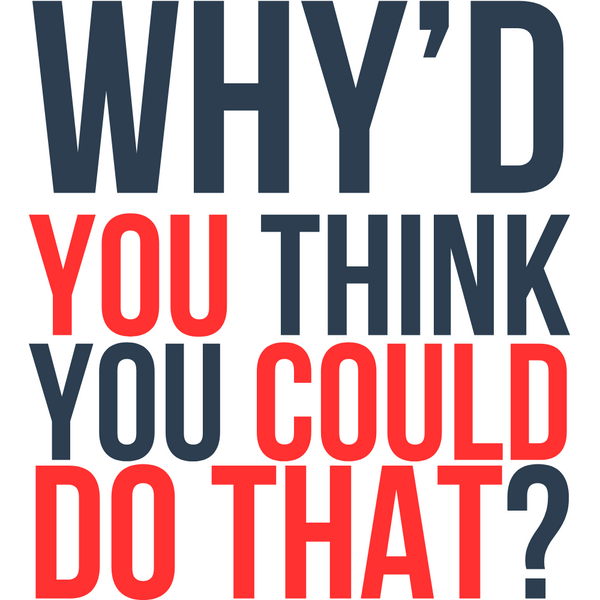
Behaviour Drives Money: The Keys to Leadership & Exponential Growth with Hugh Massie
Share
Built to Sell | Built to Buy — Long-form Feature
Behaviour Drives Money: Hugh Massie on DNA Insights, Leadership & Exponential Growth
With Sam Penny · Published 1 October 2025 · 18–20 min read
What if the way you’re wired is silently steering every financial and business decision you make? In this in-depth conversation, Hugh Massie—Founder of DNA Behavior—explains why behaviour is the denominator of success and how leaders can align wiring, money, and culture to build exponential businesses.
- From CPA to Behaviour Pioneer
- The DNA of Behaviour: Hard-wired vs Learned
- Why Behaviour Drives Money
- Behavioural Leadership, Teams & Culture
- Exponential Mindset: Thinking 10×
- Mentoring Boys Without Fathers: Identity & Values
- AI, Personalisation & the Future of Behaviour
- Three Practical Steps to Align Behaviour & Money
- Listen & Subscribe
From CPA to Behaviour Pioneer
Hugh Massie’s path to behaviour science didn’t begin in a lab—it began over breakfast. As a chartered accountant turned wealth manager in Sydney, he was asked whether he was truly happy. His answer unlocked a mission: help people become financially self-empowered. That mission led him away from pure financial literacy and into the psychology of money—our innate tendencies, our stress responses, our decision patterns.
“I realised helping people with money wasn’t just about stocks and bonds—it was about teaching them about themselves… that they had a financial personality.”
Within a year he was mapping natural and learned behaviours, engaging psychologists, validating profiles, and investing in technology. Forty flights between Sydney and Atlanta later, DNA Behavior International took shape. The hypothesis was clear and has since been tested at scale: leaders make better decisions—and build more valuable enterprises—when behaviour is measured, understood, and managed.
The DNA of Behaviour: Hard-wired vs Learned
In Hugh’s model, our core behavioural wiring is shaped very early in life. Genes contribute, but formative experiences in the first three years play an outsized role in setting the “riverbeds” of our responses under pressure. Learned behaviours layer on top—useful, adaptive, and trainable—but when stress hits, we snap back to type.
Understanding this distinction is liberating for founders and executives. It reframes “weaknesses” as predictable patterns to manage, not moral failings to hide. It also helps teams design roles where people operate in strength zones—and know when to slow down, seek a second perspective, or apply a checklist to counter a known bias.
Why Behaviour Drives Money
Money is more than numbers on a balance sheet; it’s a lens through which we express our life priorities—experiences, relationships, impact. Hugh argues money is both currency and energy: it’s around us 24/7, shaping and being shaped by our belief systems. Good beliefs compound; poor mindsets leak value.
“If you have bad thoughts about money, bad things will happen around money. If you have good thoughts and manifest the right way, great things can happen.”
At the enterprise level, the CEO’s financial attitude cascades into budgeting, risk appetite, and investment in innovation or culture. Behaviour isn’t “soft stuff”; it shows up in performance—how fast decisions get made, how well resources get allocated, what kind of risks are taken (or avoided) and how consistently teams execute.
Stress exposes your money pattern
Under pressure, people default to type: risk-takers lean into bold bets; collaborators convene the room; innovators search for solutions; spenders throw money at the problem. Awareness lets leaders insert guardrails—e.g., a risk-oriented founder agreeing to staged experiments instead of “all-in” moves—so the upside of the natural style is captured while the downside is contained.
Behavioural Leadership, Teams & Culture
Transformation starts at the top. Hugh typically profiles the CEO (a fast 10–12 minute instrument), then the execs and, increasingly, the wider organisation via AI-assisted “digital scans” to build psychometric heat maps. The output highlights role fit, customer-facing friction, and where culture is helping—or hurting—value creation.
“In one firm, 21 of 25 leaders were low on personal trust—dominant, transactional, sceptical. It connected to client churn and staff turnover. The data made the culture problem impossible to ignore.”
Culture, in this framing, is not a poster on the wall. It’s the repeatable way the company solves problems differently from competitors—and what customers can feel. Open profile-sharing (leaders go first) builds mutual understanding and psychological safety. Where conversations are shut down, innovation withers; buyers notice.
Practical uses of behavioural data
- Role design: Put people where their natural energy is a feature, not a bug.
- Decision cadence: Match meeting formats and timing to team wiring (e.g., give reflective processors a pre-read; let fast-deciders propose options).
- Customer alignment: Tune communication style to the client’s decision pattern to reduce friction in sales and service.
- Succession & valuation: De-risk key-person dependency by mapping behavioural coverage across leadership seats.
Exponential Mindset: Thinking 10×
Incremental growth optimises yesterday; exponential growth designs tomorrow. Hugh encourages leaders to consider “10× for 10 years”—a thought experiment that forces new assumptions about ideal customers, talent, and technology. Even if you only realise 10–20% of a 10× vision, you likely outperform cautious linear planning.
One common limiter is legacy systems and legacy thinking. Founders often treat past decisions as immovable objects. The exponential reset asks: if we were starting today to reach 10× the impact, what channels, partnerships, or product primitives would we choose? From there, run staged trials with clear kill/success criteria to derisk the leap.
Signals you’re still playing incremental
- You debate costs more than you explore upside scenarios.
- Your experiments are tiny and infrequent; learnings don’t compound.
- Most “strategy” meetings are about servicing the current backlog.
- Hiring over-indexes on “safe operators” and under-indexes on “builders.”
Mentoring Boys Without Fathers: Identity & Values
Hugh’s advocacy for boys growing up without fathers is personal: his father passed away when he was young. In adulthood, that experience crystallised as a calling to mentor—and to help others turn adversity into agency. The thread back to business is direct: identity and values govern decisions. When leaders define a deliberate identity—how they intend to show up—clarity follows.
“Your identity is more than purpose or values—it’s how you want to be seen and held accountable. Once that’s set, it governs decision-making.”
Resilience, in this context, is the discipline of converting setbacks into fuel—“turning lemons into lemonade”—and designing a company that does good and does well. Social impact woven into the product and go-to-market opens networks, aligns talent, and compounds brand equity.
AI, Personalisation & the Future of Behaviour
With AI-driven behavioural scans, large organisations can now put a “tailor-made suit” on every customer from the first interaction—shaping onboarding, communications, product fit, and service at scale. The opportunity is to pair agent capabilities with genuine understanding of the person being served, not merely their demographic or balance.
Near-term, enterprises will redeploy roles rather than replace relationships outright: data stewardship, AI-ethics oversight, and judgement-heavy functions rise in value, even as repetitive entry-level tasks shrink. Net effect: more entrepreneurship, more skill mobility, and—done well—better customer experiences that still feel human.
What leaders should do now
- Map your data: Ensure behavioural and operational data can talk to each other securely.
- Pilot responsibly: Start with low-risk, high-learning use cases (onboarding messaging, client meeting prep).
- Train for judgement: Upskill teams in critical thinking, bias awareness, and ethical use of AI outputs.
Three Practical Steps to Align Behaviour & Money
- Get your readout. Complete a full DNA profile to surface strengths and predictable struggles. Awareness is the lever that moves the system.
- Audit your decisions. Write down your best 3–5 decisions and worst 3–5; circle the patterns. Where did stress or bias show up? What guardrails will you install next time?
- Build your coaching bench. Make yourself coachable. Recruit a small set of mentors (performance, health, finance) to keep your mindset clean and your energy high.
Interested in trialling a profile? Reach out to arrange access and see your initial insights.
Listen, Watch & Subscribe
Prefer the episode in your ears? Find it wherever you listen:
Apple Podcasts | Spotify | YouTube
- Subscribe to Built to Sell | Built to Buy and share the episode with a friend — it genuinely helps others discover the show.
- Reflect on one behaviour–money pattern you’ll manage differently this week.
- Start a conversation with your team: which decisions bring out our best wiring — and which need new guardrails?
— Sam Penny
